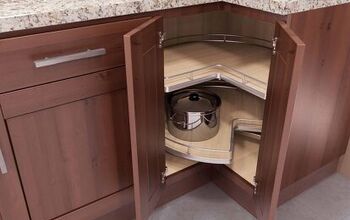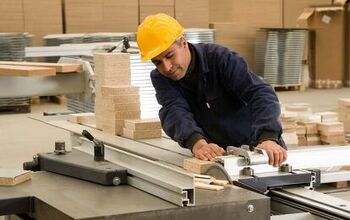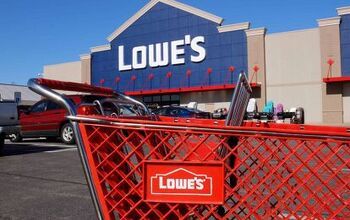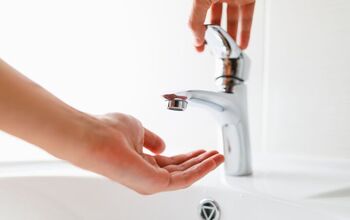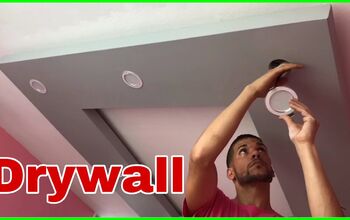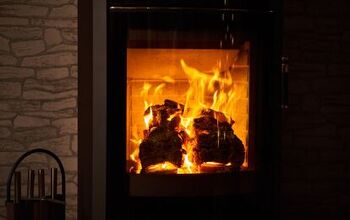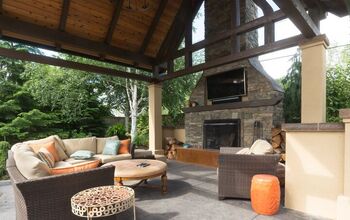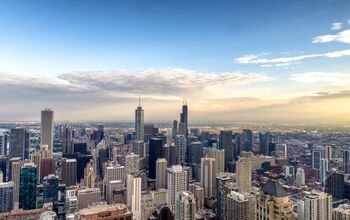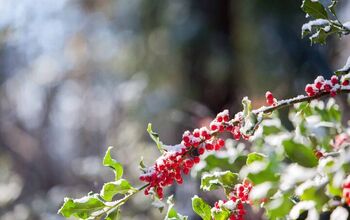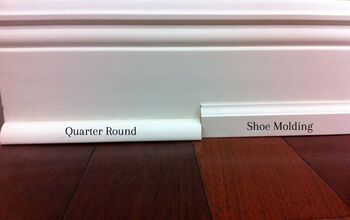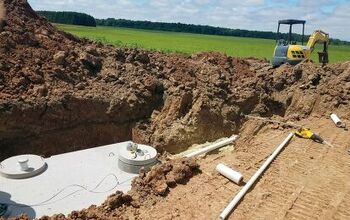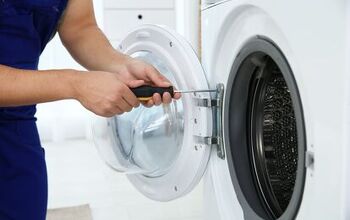17 Types of Stucco (Various Finishes & Textures)

When you’re working on putting together a design scheme, nothing adds a little bit of texture like a coat (or three) of stucco. Stucco offers an impeccably exotic feel that helps your home appear elegant yet welcoming. The right types of stucco walls can turn your home into a desert paradise or a European villa, so how do you know which to choose?
There are two main types of stucco, traditional and synthetic, and nine common stucco finishes, including dash, float, and smooth. Other finishes are cat face, Spanish lace, Santa Barbara, worm, English, and lace and skip. Finish materials can be cement-based, acrylic, or synthetic; application styles are one-coat, three-coat, and EIFS (Exterior Insulation and Finish System).
Choosing which stucco to get stuck with can be a little rough. Thankfully, UpgradedHome has all the research you need to make your home’s coat worthwhile.
Two Main Types Of Stucco
Before we get into the many subcategories, we’re going to talk about the two big umbrella terms used in stucco. When most people categorize stucco, they mention whether it’s a traditional stucco or a synthetic one. These terms refer to how the stucco is made.
Traditional Stucco
Traditional stucco is made of Portland cement, sand, lime, and water. It’s the “old-school” way to make things happen. It’s generally heavier and more durable than synthetic stucco. However, the big drawback is that it often takes more coats to apply, which means you might have a harder time installing it.
Most traditional stucco is pretty expensive to get and repair. However, homeowners adore it, so it’s worth every penny.
Synthetic Stucco/EIFS
Synthetic stucco is also known as EIFS, the Exterior Insulation and Finishing System. The entire concept is to give a home’s exterior a stucco-like finish for a less expensive price tag. EIFS is a six-layered stucco-like finish that has a light build and is relatively easy to install compared to old-school stucco.
While it is less expensive, synthetic stucco isn’t very durable. In the past, synthetic stucco had a fairly bad reputation due to its tendency to get moldy. Synthetic stucco typically adheres to gypsum board or wood. If installers don’t put up the stucco correctly, it can let in moisture and lead to rot.
Additionally, this can attract termites, since they love a moist environment. So, there’s a potentially higher risk of termites making their way into the walls and feasting.
Nine Types of Stucco Finishes
Knowing whether you should get synthetic or traditional stucco is great, but now you need to choose the type of finish you want to get, too. So, let’s get started!
1. Dash
Dash is one of the most popular types of stucco finishes you’ll find on the market. It has a very gravelly look, with a strong, rough texture. Most people prefer to use it on home exteriors, especially if they want to have a modern home exterior. It looks great with all colors, and is fairly easy to install. In some parts of the country, it’s also known as “roughcast” stucco.
One cool thing about dash stucco is its traditional application method. The finishing layer is literally sprayed onto the home’s exterior!
2. Float/Sand
A close cousin of dash stucco is float. Also known as sand stucco, this finish has an even and grainier feel than dash. The idea behind it is to give your home a sandy, floated look that looks pristine. Most homes use lighter colors for this stucco, and it remains popular as an exterior stucco pattern. This stucco is particularly popular among business exteriors due to its delicate appearance.
Float stucco has to be applied gently, by hand, with a float trowel. Otherwise, you won’t get the results you want. You can choose a coarse, medium, or fine type of sand finish for this option.
3. Cat Face
You might have seen stucco that is smooth in some parts, but contains patches of rough texture in others. This is known as “cat face” stucco, primarily because older versions would look like cats’ faces poking through the walls. While most people wouldn’t see this unless they were under the influence of certain hallucinogens, the name stuck for the most part.
Regionally, this is also known as Montalvo or California stucco. However, we’re just going to call it a cool interior stucco to use on your walls.
4. Spanish Lace
Spanish lace is an interesting, smooth-yet-not-smooth type of finish. The bumps are there, but they aren’t rough like dash or sand. After a certain level, all the bumps end up being a flat surface, leaving grooves underneath. These are also known as skip-trowel finishes or lace and skip finishes. If your home has faults, then adding Spanish lace can cover it up.
This is one of the few types of stucco that only requires two coats instead of three. With light layers, it looks like a cloudy lace, like the photo above. When heavily layered on, it looks like you literally applied lace to stone. It’s neat like that.
5. Santa Barbara
The Santa Barbara look is pretty popular in California, primarily because it comes in a wide range of colors. This is a semi-smooth finish that is made of ultra-fine grains of sand. This gives it a silky yet rugged look that’s perfectly Western. It’s suitable for both outdoor and indoor settings, too.
If you’re a fan of Santa Barbara stucco, you’re in for a treat. This can be easily obtained via both traditional and EIFS styles, which means it’s affordable at virtually any income level.
6. Smooth Texture
Oh, the velvety look of smooth stucco! This is a finish that is known for being ultrafine, and for having a feel that almost resembles velvet. In terms of visuals, you might notice some color differences that look like patches or even “tie-dye blots.” If you want to have an industrial look to your room, this polished concrete vibe will do wonderfully.
While it is wildly visually appealing, the truth is that it’s kind of a hard type of stucco to apply. This often requires the hand of an expert stucco installer. Since it can be difficult to install, the price of smooth stucco is high. Repairs, too, are pretty hard to do—especially if you’ve got cracks.
7. Worm/Swirl
No, these don’t have creepy crawlies in the stucco. Worm stucco finishes are easily recognizable by their “streaky” appearance, with many lines throughout the wall’s surface. There are many different subgenres of worm finishes, including swirl and “putz” stripes. This is a good option for people who want to have a bold interior that has a more geometric look to it.
Worm stucco involves large aggregate pieces added to the stucco, giving it a stripey look that juts out. Sometimes, it’s even rubbed in by hand. This gives it the groovy indents that people enjoy. The issue with worm stucco is that you might have a hard time getting a smooth repair.
8. English
English stucco is one of the oldest forms of stucco still being used today, and it’s easy to spot. It’s a heavily brushed-on finish that looks like layered brush strokes when it’s complete. Sometimes, it will even have upward curls that you can feel branching off the stucco’s finish. This gives it a heavily painted look that works well with older buildings.
Because you can only do English stucco with traditional stucco, it can be a pretty pricey option. This, along with its antique appearance explains why you usually only see this on older buildings. The good news here is that it’s remarkably forgiving and can be a cinch to patch. So if you have it, then you definitely are in luck in terms of durability.
9. Lace And Skip
Lace and skip stucco is a very common, traditional texture. It’s great for hiding imperfections and is often used for both commercial and residential applications. Lace and skip comes in tons of variations that have subtle differences, but they’re applied using the same method.
You’ll see lace and skip stucco in fine, medium, and coarse patterns. This texture is applied using a base coat followed by the textured layer itself. In most cases, lace and skip is used with traditional stucco. However, it can be done in acrylic, too, although acrylic lace and skip has less depth.
In most cases, lace and skip is applied by hand. Another option is to spray it out and then flatten or knock it down using a trowel. The result is a very forgiving texture that can camouflage imperfections on the wall’s surface.
Three Stucco Finish Materials
Aside from stucco types and finishes, there’s also finish material to think about. The top three are cement-based, acrylic, and synthetic.
Cement-Based
You’ll often see stucco that uses dark gray Portland cement, but cement-based finishes use white Portland cement instead. The reason for this is so that color can be added to the white base, resulting in even coloring across the finish coat.
Generally, cement-based stucco finish ranges from 1/16” thick to ⅛” thick. Typically, the smoother you prefer the finish, the thinner the finish material.
Acrylic
Acrylic finishes are composed of acrylic and an aggregate. Essentially, an acrylic finish looks like a high-quality exterior paint mixed with aggregate, making the finish material thick and sticky. Most acrylic finishes are around 1/16” thick.
Synthetic
The third type of stucco finish material is synthetic, and this type is very similar to acrylic. Often, synthetic finishes are made from acrylic, but there are some differences. In most cases, synthetic finishes are used for EIFS systems because they help prevent water from entering the wall.
There are various aggregate sizes to choose from with a synthetic finish. Your choice of aggregate will affect the appearance and feel of the finished stucco. Generally, options include smooth, fine, medium, and coarse aggregates.
Three Types Of Stucco By Application Style
Now that we’ve gone over the different finish types and materials, it’s important to remember that there is yet another way to categorize your stucco: application processes. The vast majority of types of stucco walls are going to be either 1-Coat or 3-Coat stuccos. Let’s talk about these two major categories, just to help you get a bit more situated.
1-Coat Stucco
This is actually not a single coat, but rather, a cement base coat followed up by a topcoat. In many cases, you will also apply a foam that helps the stucco’s structure get a better grip. This is a common style for Spanish Lace stucco, smooth stucco, and dash stucco. However, other types can also have 1-Coat options.
3-Coat Stucco
If you get traditional stucco that is going to be extra heavy, then chances are you’re going to need a 3-Coat stucco. This, too, is a bit of a misnomer. This involves the following parts:
- A Cement Coat. Traditionally, it’s at least 7/8 inch thick. This acts as the base coat.
- A Water-Resistant Barrier. This is usually asphalt-covered paper that’s tacked to the base coat.
- One Or More Layers Of Scratch. Scratch can be a number of different things, including a wire grid, a rough coat of stucco, or a brown layer.
- A Finishing Coat. Sometimes this is called a primer, other times it comes with a primer. Go figure.
EIFS Stucco
EIFS stands for Exterior Insulation and Finish System. From the outside, EIFS stucco looks just like a typical stucco installation. It usually has an acrylic finish, but it’s different from the traditional hard-coat system due to its inner layers.
The reason for this is that EIFS has multiple layers that form a complete wall system. This system has special properties, such as increased air barriers and improved protection from water and moisture.
The usual layers in EIFS stucco include a water and air barrier followed by adhesive base coat and foam. Next is a base coat embedded into fiberglass mesh. It’s optional to add a primer coat, and then all the layers are covered by the finish coat.
Basic EIFS AssemblyA basic EIFS assembly is a more affordable option, but the downside is that it doesn’t include a water barrier. Instead, the system is applied directly over the substrate. The basic assembly system typically includes the adhesive base coat, foam, a fiberglass mesh base coat, an optional primer, and a finish coat.
EIFS Assembly With Water Management SystemThe other option when working with EIFS stucco is an EIFS assembly with a water management system. This variation of EIFS includes a moisture barrier applied on top of the substrate. This barrier is also called a drainage plane, and it can be applied as a fluid or paper.
Although an EIFS assembly with a water management system obviously works harder to keep out moisture, all types of EIFS have a finish coat designed for that purpose. EIFS assemblies with water management systems simply have an extra barrier.
Six Common Stucco Color Schemes
Next, let’s get into the various color schemes that are commonly used with stucco.
Neutral Shades
Neutral shades are always a safe choice, and you’ve got a huge array of grays, tans, and browns to choose from. You really can’t go wrong selecting a neutral shade for your stucco. One thing to keep in mind is that you’ll want to have a more neutral roof color as well. A vibrant roof paired with neutral stucco doesn’t always mesh well.
White
If your goal is to create a modern and fresh look, then you can’t go wrong with white stucco. Reminiscent of gorgeous Grecian buildings, white stucco comes in a variety of shades. It can even be mixed with other colors for a customized marbled effect.
Yellow
Because of its many shades, yellow can be bright and eye-catching or subtle yet warm. Either way, yellow stucco is sure to stand out and bring with it a refreshing tropical feel.
Green
In search of a natural, earthy color? Green is an excellent option. You may wish to consider a deep green or mossy green shade, rather than an intense lime green. Paired with light or white wood, green makes for an amazing pop of color.
Pink
It may not be the most popular choice, but pink stucco truly pops and is sure to make your home stand out. Be sure to look at multiple shades of pink to determine which will work best with your home’s architectural style.
Two-Tone
If you prefer to have something truly unique and customized, then you’ll want to think about doing two-tone stucco. Applying two different colors takes extra time and effort, but the result is nothing short of breathtaking. It looks especially chic on large two-story homes, or structures with interesting architectural features that can be highlighted using the two tones of stucco.
What Are The Easiest Types Of Stucco To Maintain?
This is a tough one to answer, simply because they all tend to do fairly well with a regular cleaning using a bleach-water mix. However, there are still some elements that might make one type of stucco better for you than others. Here’s what you need to know:
- Synthetic stucco is not as water-resistant as traditional stucco. This means that you may have to space out your washing, or that you may need to make time to address mold patches more frequently.
- Getting traditional stucco means that you can have an easier time with hosing and scrubbing. Synthetic is more prone to breaking, which means that high-pressure water and aggressive scrubbing are likely to cause breakage. After all, synthetic stucco is hollow, so if you hit it with too much pressure, it might crack.
- If you want to maintain or update your exterior’s look, you can paint stucco. Smooth finish stucco is easier to paint than something along the lines of dash or worm.
- Smooth stuccos and sand stuccos are generally easier to clean. There is less chance of having stucco fall off and even lower chance of having your stucco get clogged with moss or mold.
In the event that you are a smoker, you may want to check out What Is The Best Cleaner To Remove Nicotine From Walls?
Which Types Of Stucco Are The Longest-Lasting?
Generally speaking, this isn’t something most people should worry about. Stucco siding is not exactly fragile by any means, and actually happens to be one of the best siding options. Most stuccos will last between 50 to 80 years with proper maintenance, assuming you don’t live in an area that is overly wet or prone to extremely high winds.
While stucco is still admirable when it comes to durability, there are some types that seem to be more durable than others. Traditional stucco is obviously the more durable type in terms of make (or system). With that said, there’s also a little more information we know—at least, anecdotally. Stuccos that are a little bit chunkier (like dash or Spanish Lace) tend to be slightly longer-lasting than others.
How Can You Tell If You Have Synthetic Stucco On Your Home?
Knowing the type of stucco you have on the side of the home isn’t something to overlook. It’s vital, especially if you want to repair cracks that you start seeing or if you want to add a new section onto your home. Thankfully, figuring it out is pretty simple. Just knock on the stucco siding to find out if it’s synthetic.
Synthetic stucco siding tends to have a hollow sound. Traditional stucco, on the other hand, will have a thick, filled-in feeling whenever you knock on it. Of course, if you have a type of stucco specific to traditional, it’s safe to assume that you have traditional stucco.
How Much Does Stucco Siding Cost?
To a point, stucco is remarkably steady when it comes to prices. Most places will add stucco to a home’s siding for anywhere between $7 to $9 per square foot, depending on the type and the area you live in. If you want to have synthetic stucco instead, the price is far lower, at around $3.90 to $7.95 per square foot.
Believe it or not, stucco is considered to be one of the most expensive types of siding that you can buy. The reason why is twofold. The materials are pretty pricey due to the high price of cement and the sheer quantity of cement that you will need for a full wall. Moreover, applying stucco is a highly labor-intensive endeavor.
If you love the look of stucco but don’t like the price tag, it’s understandable. You can save a considerable amount of money by switching to a synthetic stucco. You will get the same look, similar durability, and decent energy efficiency at a fraction of the cost.
It’s important to note that repairing stucco or replacing stucco doesn’t have the same cost as just adding some siding for the first time. If you want to replace stucco siding, you can expect to add a dollar to the price of your stucco, solely from the cost of sandblasting to clear out the old.
How Much Does It Cost To Repair Stucco Siding?
This is a surprisingly pricey issue, indeed. Though it can vary from type to type, labor is the bulk of the costs. Materials are nominal, in most cases. Labor costs will be between $60 to $120 per square foot, with synthetic stucco being the pricier pick. Material costs can vary greatly, with the full range being between $10 to $50 for the stucco, plus an additional $50 for finishing materials.
Overall, you should expect to see a repair bill that is at least several hundred dollars if you have a serious repair. If it gets to the point where you have a very large hole punched in your stucco, then you might need to get a full replacement order for that wall. This can easily amount to several thousand dollars, depending on how bad the damage is.
Are Certain Types Of Stucco Outdated?
Believe it or not, the type of stucco you choose can end up giving you an outdated design. Some types of stucco finishes are notoriously outdated, while others are considered to be timeless. If you want to keep on-trend, here’s what you need to know:
- English, worm, and Spanish Lace stuccos are all considered to be pretty dated. They tend to harken back to the Victorian era, the 1970s, and the 1980s respectively. If you are going for that look, then that’s great and you should use it. However, you can run the risk of making your home look too retro for comfort.
- Sand, float, smooth, and dash stuccos are timeless. Ever since they were first invented, these types of stuccos became stylish and remained stylish. This is primarily because they offer timeless, clean lines that most people find attractive. Since clean lines are versatile, you don’t have to worry about these types causing a “ding” to your property values.
- Cat face and Santa Barbara stuccos tend to be location-specific. Both of these stuccos are modern, sure, but they come with a catch. These are stucco styles that tend to be associated with specific parts of the United States. Oddly enough, they are both closely linked to SoCal. If you’re looking to channel California, or maybe a little bit of the Southwest, then these are great options.
- When choosing your stucco, remember that color will play a huge role in how modern it looks. A good amount of paint can modernize old stucco pretty quickly. For example, cream-colored Spanish Lace can give a place a very Tudor look. However, if you paint it slate gray, it will look more modern and urban.
Conclusion
There’s a huge number of stucco variations, ranging from traditional and synthetic to textures like cat face, worm, and dash. Choosing between textures such as Spanish lace, Santa Barbara, smooth, float, English, and lace and skip allows you to truly customize your home’s design.
Make it even more unique by choosing between cement-based, acrylic, or synthetic finish materials and application styles like one-coat, three-coat, and EIFS. And of course, you’ll need to select your color scheme, whether that’s neutral, white, yellow, green, pink, or even two-tone.
Stucco never goes out of style, and it’s a great way to highlight beautiful architecture and make your home stand out. Knowing the differences between all the different types of stucco allows you to really make it your own.
Related Guides

Ossiana Tepfenhart is an expert writer, focusing on interior design and general home tips. Writing is her life, and it's what she does best. Her interests include art and real estate investments.
More by Ossiana Tepfenhart



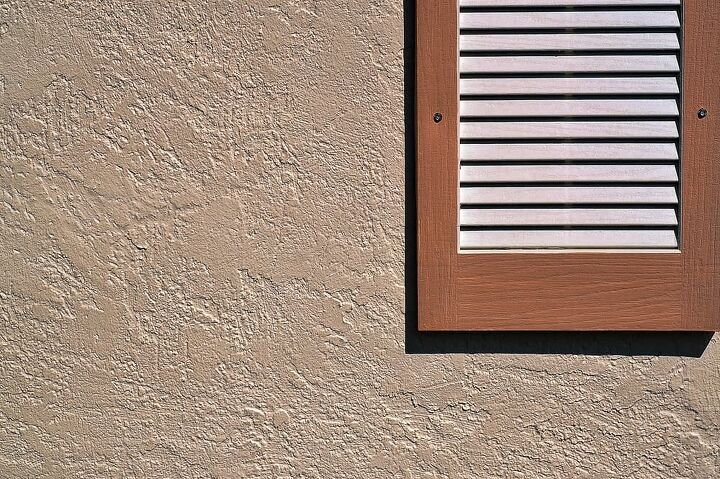
















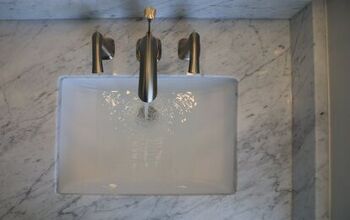
![10 Best Cordless Leaf Blowers – [2022 Reviews & Ultimate Guide]](https://cdn-fastly.upgradedhome.com/media/2023/07/31/9070789/10-best-cordless-leaf-blowers-2022-reviews-ultimate-guide.jpg?size=350x220)
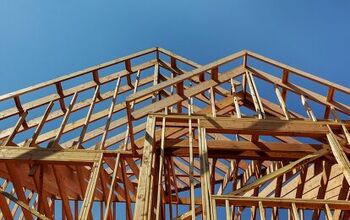
![Finishing Basement Without Permit [Is It Really Illegal?]](https://cdn-fastly.upgradedhome.com/media/2023/07/31/9070078/finishing-basement-without-permit-is-it-really-illegal.jpg?size=350x220)
